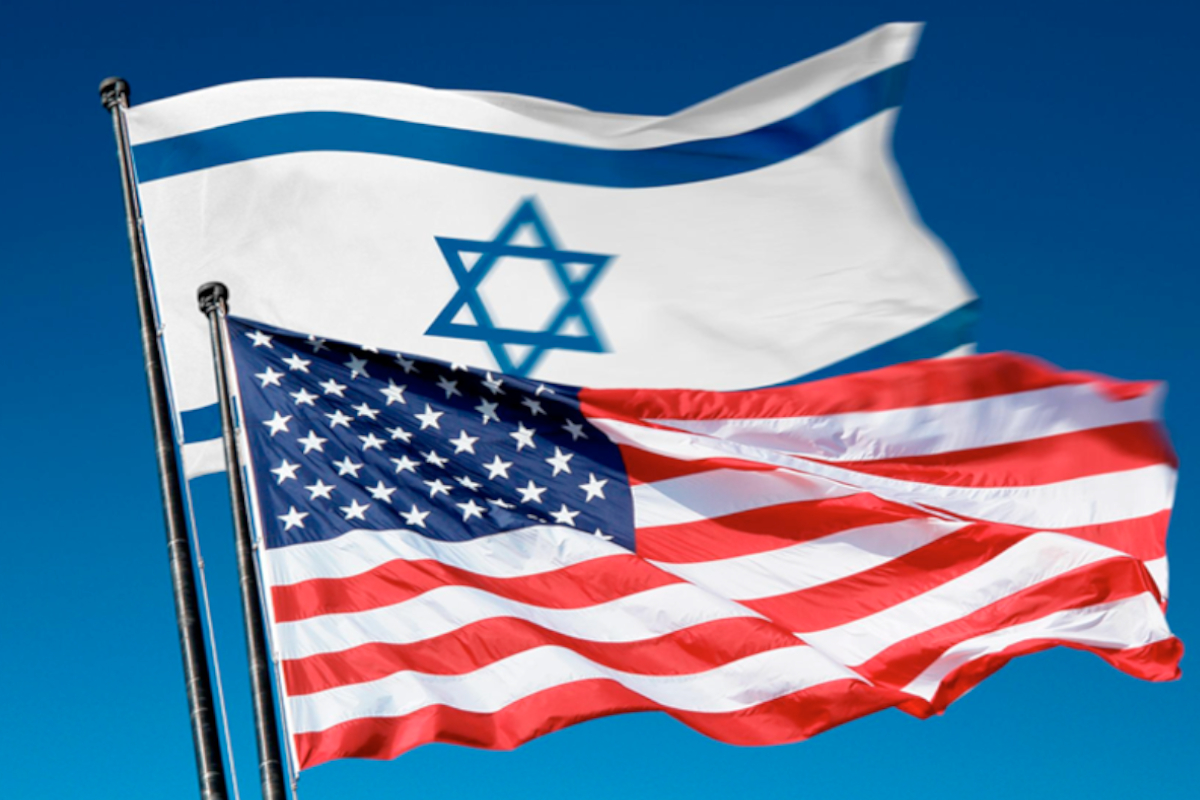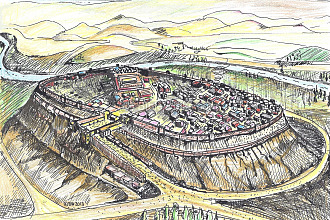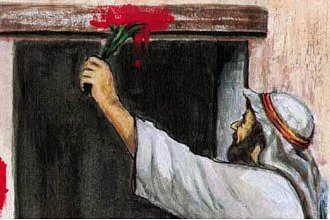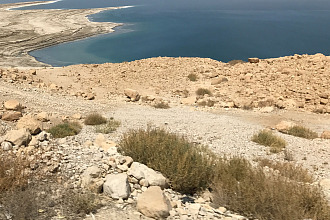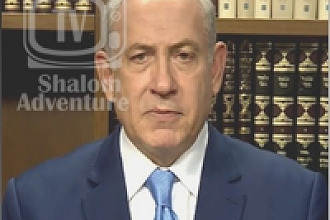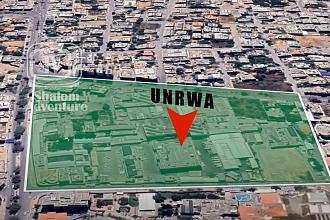As the war in Gaza nears its final weeks, we can carefully start to think about the future. Israel has suffered heavy losses—nearly 2,000 dead, thousands wounded, and over $150 billion in damages. October 7 will be a grim event to remember for generations to come. However, when looking at the broader picture, Israel has the upper hand on all fronts and has significantly weakened its enemies.
1. Gaza
The IDF has withdrawn from most of Gaza, leaving much of it in ruins. Half of Hamas’s fighters have been eliminated, most of their weapons were seized, and their rocket capabilities nearly destroyed. While Hamas remains in power and still enjoys support, it is much weaker. Most hostages have returned, though 80 remain, alive or dead. 90% of all buildings in Gaza are damaged or destroyed.
2. Lebanon
Hezbollah, once seen as Israel’s most dangerous enemy, has been severely damaged as well. The IDF eliminated or injured nearly 10,000 of its members, destroyed weapons stockpiles, and wiped out its command structure. After Israel's airstrikes, the "Pager attack", the assassination of Nasrallah, and then a ground maneuver kicked Hezbollah from the border. A ceasefire has saved the group from total collapse but under humiliating conditions. Israel still operates in parts of southern Lebanon, and Hezbollah is too weak to resist.
3. Syria
Few expected the dominoes set in motion on October 7 would lead to Assad’s fall. With Hezbollah in retreat, Sunni jihadists seized the opportunity and toppled his regime. Iran and Russia, once dominant in Syria, were forced out. Israel took advantage of the chaos, destroying Syria’s heavy weapons and securing control over the Syrian Hermon and a buffer zone. Though temporary, this is a major strategic gain.
4. Iran’s Militias in Iraq
Iran-backed militias in Iraq launched drones at Israel, some of which got through and killed 2 Israeli soldiers. However, after suffering losses from U.S. and Israeli strikes, they have lowered their profile and stopped all attacks. Iraq may try to rein them in, but Iran will likely continue using them to spread instability.
5. Houthis in Yemen
The Houthis, Iran’s most numerous proxy force (225,000 fighters), disrupted global trade with attacks on ships in the Red Sea. They also launched dozens of attacks on Israeli civilians with ballistic missiles and long-range drones, most of which were intercepted. While suffering losses from U.S. and Israeli retaliatory airstrikes, they remain powerful. Notably, Arab countries like Egypt and Saudi Arabia, despite being threatened by the Houthis, did nothing to stop them. The world must deal with this threat.
6. West Bank
Israel has managed to keep the West Bank under control despite increased Iranian-backed arms smuggling. Powerful explosives made in Iran did cause Israeli casualties, and IDF units are in constant battle against terror cells. While Israel’s military presence keeps Hamas at bay, the terror group’s influence continues to grow through propaganda and Iranian funding.
7. Iran
The Iranian regime was surprised by Hamas’s attack but quickly seized the opportunity to partly activate its "ring of fire" strategy against Israel. Twice, Iran directly attacked Israel with massive missile and drone barrages, most of which were intercepted. After the second attack, Israel responded with an unprecedented airstrike, destroying key Iranian military and economic assets. Iran’s vulnerability was exposed to the world. Its terror proxies in Gaza, Lebanon, and Syria have suffered crushing defeats, and its $100 billion investment in regional dominance has been largely wasted. The Iranian economy is in freefall, and its currency is collapsing. With Trump’s return to the White House, Tehran faces the possibility of renewed U.S. sanctions. What will Iran do next? They don’t have simple choices.
Conclusion: We are looking At A Clear Israeli Victory! But…
Israel has suffered greatly, but it has reshaped the Middle East to its advantage. Hamas is crippled, Hezbollah is shattered, Syria has collapsed, and Iran is weakened. While threats remain, Israel has emerged stronger and more prepared for future conflicts. The army is battle-hardened now, and well experienced.
Despite this, Hamas survived in Gaza. Why? After What They Have Done?! And Israel Is Much Stronger... Now We Must Understand How Anti-Israel Propaganda Prevented Israel From Finishing The Work in Gaza.
Throughout the war in Gaza, Israel faced not only a military challenge but an unprecedented wave of anti-Israel propaganda that significantly limited its ability to achieve a decisive victory over Hamas. This propaganda, fueled by ideological, financial, and political forces, created immense international pressure that ultimately provided Hamas with a lifeline.
Decades of Anti-Western Infiltration
For years, hostile elements have penetrated key institutions in the West—media, academia, and politics—promoting narratives that undermine Western civilization while aligning with radical Islamist ideologies. Several factors contributed to this shift:
- Foreign Influence: Massive financial investments from countries like Qatar and China have funded pro-Palestinian narratives in universities, think tanks, and media outlets
- Mass Immigration & Muslim Communities: Large-scale migration has allowed for the creation of powerful political blocs in Western nations that push an anti-Israel agenda.
- Radical Leftist Ideology: The progressive movement, which paradoxically aligns with radical Islamists against Israel and Jews, has driven a significant portion of anti-Israel activism.
- Social Media Manipulation: The use of bot networks and algorithmic manipulation has skewed online discourse heavily against Israel.
- Media Bias: Mainstream news outlets, such as BBC and CNN, have consistently framed the war in a way that absolves Hamas of responsibility while demonizing Israel.
- Campus Radicalization: American universities, fueled by Qatari funding, have become hotbeds of anti-Israel sentiment, with student movements exerting pressure on politicians and institutions.
- Political Pressure Groups: The rise of groups like “The Squad” in the U.S. Congress has ensured that anti-Israel rhetoric finds its way into the highest levels of government.
This long-standing effort meant that when war broke out, Western governments—particularly the U.S.—faced immense pressure to limit Israel’s ability to fight effectively.
How Propaganda Created Political Constraints
Initially, after Hamas's horrific crimes against Israeli civilians, Israel was able to act with relatively little international interference. In the first weeks of the war, Israel imposed a near-total blockade on Gaza, denying humanitarian aid to Hamas-controlled areas. Historically, no country at war has been expected to provide aid to an enemy actively engaged in hostilities.
This pressure nearly broke Hamas. Under extreme duress, the terror organization agreed to release dozens of hostages in exchange for relatively minor concessions—Palestinian prisoners without blood on their hands. (November 2023) However, as the war continued, global anti-Israel campaigns intensified, leading to increased restrictions on Israel’s military operations.
Examples of these pressures include:
The ‘All Eyes on Rafah’ Campaign: A viral social media movement that pushed Western governments to stop Israel from advancing on Hamas strongholds in Rafah.
- The U.S. Humanitarian Pier: In a move widely seen as naive, the Biden administration constructed a floating pier to deliver aid directly into Hamas-controlled areas, strengthening the terror group’s grip on Gaza. It broke down after a short time. And never really did anything except the cost of a lot of money.
- Airdrops of Supplies: Airdropping food despite no real need, much of which ended up in Hamas’s hands, further solidifying their control over the civilian population.
- Fuel Deliveries: Despite being warned that fuel would empower Hamas’s war machine, international actors ensured a steady flow of supplies into Gaza.
- Massive Humanitarian Convoys: hundreds of thousands of tons of food and medical supplies entered Gaza, much of it appropriated by Hamas, allowing the group to maintain power through a black market economy.
These measures, forced upon Israel by Western governments under pressure from pro-Palestinian activists, ultimately acted as a life insurance policy for Hamas. Instead of being completely dismantled, Hamas was able to maintain control, survive 480 days of warfare, and continue governing Gaza.
The Ultimate Consequence: Hamas’s Survival
Despite suffering immense losses and destruction, Hamas remains intact because of the relentless propaganda campaign waged against Israel. Had Israel been allowed to wage war without these constraints—just as the U.S. did against ISIS or the Taliban—Hamas would likely have collapsed. Instead, international intervention saved Hamas from total defeat. Just look how it is negotiating now, with no real fear for its survival.
The lesson here is clear: the war against Hamas was not fought solely on the battlefield but also in the realm of information warfare. The anti-Israel movement’s ability to manipulate global discourse directly shaped military and political outcomes, proving that the modern battlefield extends far beyond missiles and tanks—it includes media, academia, and global opinion.
How We Can Fight Back?
The battle against anti-Israel propaganda is far from over, and organizations like We Walk Together (WWT) play a crucial role in countering misinformation and awakening the American public to the truth. Our mission is to show that support for Israel is support for the United States—and that undermining Israel ultimately weakens America itself.
Key initiatives to combat the propaganda machine include:
- Leveraging Social Media: Creating viral content that counters lies and promotes factual, pro-Israel narratives.
- Educational Lectures & Tours: Hosting speaking engagements and conferences across the U.S. to inform and mobilize support.
- Seminars & Training Programs: Equipping activists and educators with the tools to fight misinformation.
- Israel Delegations & Tourism: Organizing impactful trips to Israel, allowing influencers, students, and decision-makers to witness the reality on the ground.
- Fighting Toxic Education: Advocating for transparency and oversight on foreign funding in U.S. universities to prevent the spread of extremist ideologies.
- Ensuring Free & Balanced Media: Pushing back against biased reporting and demanding journalistic accountability.
How You Can Support We Walk Together
If you believe in standing up for Israel and countering the lies spread by the anti-Israel movement, you can help in several ways:
- Share Our Content: Spread our materials on social media to amplify our message.
- Invite Us for Speaking Engagements: Arrange for us to present in schools, community centers, and conferences.
- Join Our Israel Tours: Experience the reality firsthand and help shape global perspectives.
- Donate: Financial support enables us to expand our outreach and impact. Donations can be made at wwtworld.com.
Conclusion: Securing Israel’s Future Through Advocacy
While Israel has achieved significant military victories, It is not its final war - its Enemies will keep seeking death, destruction, and misinformation. Military power will not be enough to secure Israel. It must learn how to win the battle on public opinion – and it has truth on its side. By mobilizing communities, engaging in proactive education, and countering false narratives, we can ensure that Israel remains strong, protected, and supported by its most important ally—the United States. We Walk Together is at the forefront of this fight and not alone. We can turn the tide against misinformation and strengthen the bond between Israel and the free world. There is much work to be done.

